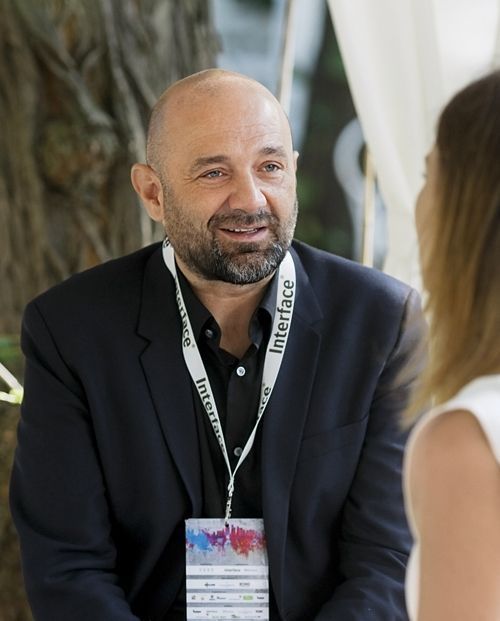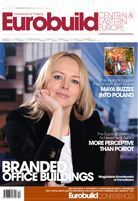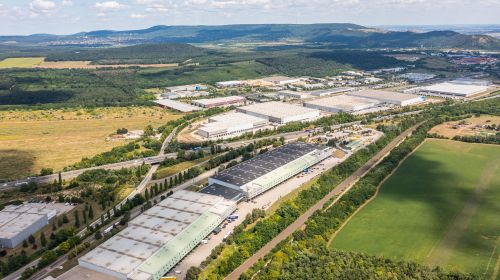Pushing the limits
Architecture
Anna Pakulniewcz, ‘Eurobuild Central & Eastern Europe’: As this is not your first time in Warsaw, what would you change here, in terms of the architecture?
Jürgen Mayer, J. Mayer H. und Partner Architekten: Warsaw is on a dynamic path to create an urban fabric that will build up the city’s density. This is important for both the residential part and its commercial activity. We would be happy to contribute to this development.
You are welcome! So what is the most important thing in architecture for you?
It is always important to push the limits of the discipline, to rethink urban life and public space. We also have to look at the changes in society, social and economic demands, digital technology, social media and new methods of construction in order to create an architecture for our times.
So what are your ideas for Warsaw?
We are focusing on projects that engage with their context and the public space around them. This could be the urban landscape within the context of the city – or seeing where the two merge together, between the interior and the exterior, whether it’s a residential building, a commercial project or a high-rise.
And what forms of architecture would you like to see here?
The form is not really important. Architecture needs inspiring partnerships between clients, engineers and architects. You need to find a client who shows interest in innovative architecture – since even a single small building can change the way that we look at a city.
What is it that you find interesting in Poland?
I have been coming here for many, many years. For example, we completed a hotel project in Kraków, in a modern district, and we are now involved in a project in Wrocław, on the Salt Market square [pl. Solny], in the historic part of the city. In Poland you have both extremes. There’s an awareness of the value of history and of a city’s historical fabric – and there’s nobody better than Polish craftsmen when it comes to renovating and looking after old buildings. At the same time, one can feel a curiosity towards contemporary innovation. You can see these extreme contrasts in almost every Polish city, in Wrocław, in Katowice, I see it in Kraków, and I see it in Warsaw.
So what would you recommend for Warsaw? To rebuild what was damaged, or to build something modern?
Both strategies can work hand in hand for different reasons. We have had the same discussions in Berlin. Some people feel that something has been lost and that we need to rebuild in order to retain our urban fabric, memories and identity; in general, the younger generation has a certain sentiment and a romanticism about the past, but without the desire to return to the ideal that is seen in old pictures of the city. Out societies today differ fundamentally from the period when such photos were taken. You cannot separate architecture from the actual period when it was built and the social context at the time. Today we somehow see an appreciation and trust in historic buildings without reflection. But this is a false idealised history. In Berlin and all over Germany we’re witnessing the reconstruction of many historic buildings. Most people, however, came to Berlin because they liked the fragmented fabric of the city, they liked the collage between the old and the new, between empty and busy – and this is what allowed experimental forms to thrive in the city, and it is this that is attractive for many people. All of this is changing since Berlin is undergoing a heavy construction boom right now and it might lose part of its coolness – that kind of special atmosphere – but I hope that something else is going to emerge out of it.
What would you do with the Palace of Culture and the largest square in Europe around it?
It needs... a certain something. It is a big empty space. Of course, a few buildings would help to bring this area to life and connect the building to the city around it. Buildings need a transition into the urban fabric. Public space only works when there is a key relationship between the scale of the building and the programming of the whole area – and this doesn’t just apply to open spaces.
The art of public space
Jürgen Hermann Mayer, an architect and artist, is the founding partner and director of J. Mayer H. und Partner Architekten. He focuses on works at the intersection of architecture, communication and new technology – mainly on public space. He also designs urban planning schemes, buildings, installation work and constructions with innovative solutions. Jürgen Mayer studied at Stuttgart University, The Cooper Union and at Princeton University. He has been working as an architect since 1996. His recent national and international projects include: Metropol Parasol, the redevelopment of the Plaza de la Encarnación in Seville; the Court of Justice in Hasselt, Belgium; Pavilion KA300, built for Karlsruhe’s 300th anniversary; an airport in Mestia, Georgia; a border checkpoint in Sarpi, Georgia; highway services in Gori and Lochini (Georgia), the ADA1 and S11 office buildings in Hamburg; the Danfoss Universe amusement and science park in Denmark. His works have been exhibited at the Museum of Modern Art (MoMA) in New York and MoMA San Francisco. He has taught at Princeton, Harvard Kunsthochschule Berlin, the Architectural Association in London, the Columbia University, New York and at the University of Toronto.





















































